

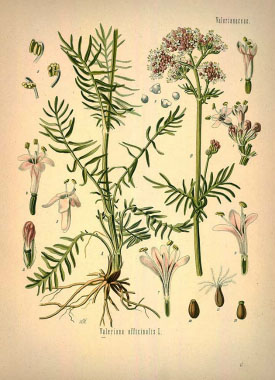
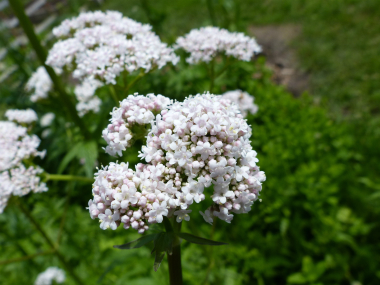
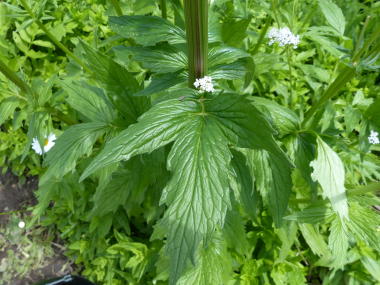
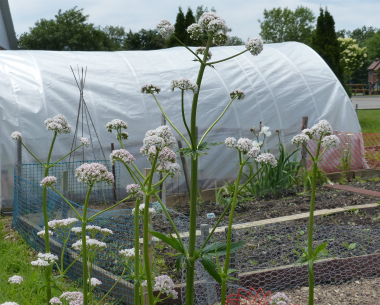
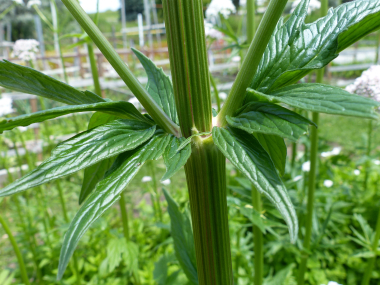
To support our efforts please browse our store (books with health benefits, etc.).
Valerian is most recognized for helping to ease insomnia, anxiety, and nervous restlessness. It became popular in Europe in the 17th century. In addition to being medicinal this is also edible. This plant was in the Valerianaceae family but is now in the Caprifoliacaeae family. When dried, this plant smells horrible.
Distinguishing Features
Valerian is a perennial plant that is native to Europe and grows (on average) up to 1 metre (3’) tall. Although it is a garden plant, it also grows wild in damp grasslands. Straight, hollow stems are topped by umbrella-like heads. Its dark green leaves are pointed at the tip and hairy underneath. Small, sweet-smelling white, light purple or pink flowers bloom in June.
Flowers
Flowers are in branched clusters of small white to pink blossoms and measure 2.5 to 5mm (.1 to .2”) long. The corolla is slightly unequal. The calyx is small and collar-like. It has three stamens. Flowers are fragrant. Flowers bloom in June and July.
 Fields
of Nutrition has medicinal benefits and vitamin/mineral content of Valerian.
Fields
of Nutrition has medicinal benefits and vitamin/mineral content of Valerian.
Leaves
Leaves grow opposite and stalked. The blade is pinnate with 6-11 pairs of terminal leaflet. Leaflets have toothed margins and the terminal leaflet is not really broader than the lateral leaflets.
Height
Depending on location and soil conditions valerian can grow anywhere from 80cm (32”) to almost 2 metres (6’) in height.
Habitat
Valerian grows in fallow fields, abandoned areas, forest edges, river banks, and in shore meadows.
Edible Parts
The seeds are edible and the leaves have been used in the past as a condiment. Leaves can be used to make a tea as well as the root. Be sure to use in moderation.
Other Name
Garden Heliotrope.
Winter Survival Food Handbook

PDF Plant Magazines
Types of Wild Food
Geographic Zones Seasons
Disclaimer
EdibleWildFood.com is informational in nature. While we strive to be 100% accurate, it is solely up to the reader to ensure proper plant identification. Some wild plants are poisonous or can have serious adverse health effects.
We are not health professionals, medical doctors, nor are we nutritionists. It is up to the reader to verify nutritional information and health benefits with qualified professionals for all edible plants listed in this web site. Please click here for more information.
Why Edible Wild Food?
- Food costs are rising
- Free, wild food is readily abundant
- Wild food adds nutrition to your diet
- Wild food can help treat various medical conditions





